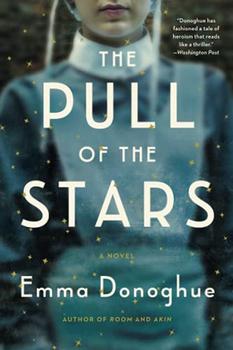Page 1 of 1
There is 1 reader review for The Pull of the Stars
Write your own review!
 Cathryn Conroy
A Soaring Story of Love and Survival…But Beware the Extensive Graphically Gruesome Medical Details
Cathryn Conroy
A Soaring Story of Love and Survival…But Beware the Extensive Graphically Gruesome Medical Details
Have you ever watched a horror movie with your hands covering your eyes, but your fingers weren't actually touching-- just so you could see through them a little? Yeah, that's this book.
Let's back up a bit.
Written by Emma Donoghue, this is the story of Julia Power, a midwife/nurse in an overwhelmed Dublin hospital in 1918 at the height of the flu pandemic. The Great War is still raging, creating intense deprivations for the residents of Dublin—from too little food to too little fuel. The story takes place over three days—October 31, November 1, and November 2—when Julia is suddenly placed in charge of a small three-bed overflow ward of pregnant women who have developed the flu. Working tirelessly by her side is Bridie, a young volunteer with a mysterious background that is slowly revealed. Dr. Kathleen Lynn, a physician who is part of the fledgling and violent Sinn Féin political movement, makes occasional appearances on the ward.
Back to covering your eyes…a very large part of the story's narrative is detailed descriptions of these flu-infected women giving birth prematurely, a common complication of the 1918 flu. At times it's fascinating, but it's also almost always graphically gruesome. This is not a book you can read while eating lunch. If the sight of blood is too much for you, then reading this book will probably be difficult.
This is a very fast read. The action moves quickly as the plot—death, life, doom, hope—relentlessly unfolds, much like someone suffering with the flu. At times, it's almost too much to read, too much to take in, but the gripping, provocative story will not be left alone for long.
This is a story about the power of the human soul to survive and the body to fight for life. It is about finding love in unexpected places, and the joy and hope that brings even as death scurries around the corner.
A note for 2020: Even though it was written before Covid-19, this is a pertinent book for our times. If nothing else, it serves as a reminder that the world has previously experienced and recovered from a pandemic—one far worse than Covid-19. And even in our turbulent, politically divisive times, we are not experiencing a world war as well as a deadly illness that killed between 3 percent and 6 percent of all humans worldwide. It was worse in 1918 than it is now. We will survive this, too.
